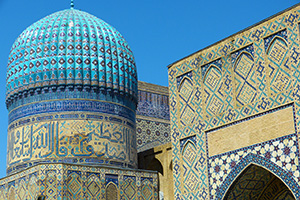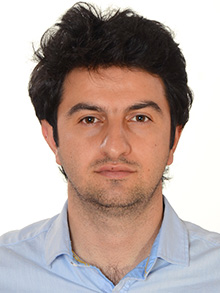Publications
Uzbekistan on the way to a sustainable future: environmental initiatives and international cooperation  On November 11-13, President of Uzbekistan Shavkat Mirziyoyev is taking part in the World Summit on Combating Climate Change at the 29th session of the Conference of the Parties to the UN Framework Convention on Climate Change, which will be held in Baku.
On November 11-13, President of Uzbekistan Shavkat Mirziyoyev is taking part in the World Summit on Combating Climate Change at the 29th session of the Conference of the Parties to the UN Framework Convention on Climate Change, which will be held in Baku.
Delegations from almost 200 countries at the level of heads of state, government and ministers, representatives of international organizations, NGOs, expert, scientific and social circles are expected to participate in the conference. READ MORE
Publications
What the President of Uzbekistan regularly talks about with entrepreneurs of the country  Dilafruz Khusanova,
Dilafruz Khusanova,
Head of the Press Service of the Chamber of Commerce and Industry of Uzbekistan
Agriculture is one of the leading sectors of Uzbekistan’s economy.
The annual open Dialogue of President Shavkat Mirziyoyev with entrepreneurs, which has already become a tradition, once again gave impetus to new ideas and projects for representatives of all business categories. This year, discussions at the main platform in the world of Uzbek business took place on August 20 in Nukus. At the event, the Head of State announced new initiatives in five areas. READ MORE
Publications
Multiple Countries Strive to Enhance Middle Corridor Despite Challenges  By Vasif HUSEYNOV, PhD, Head of Department, AIR Center, Adjunct Lecturer, ADA and Khazar Universities, Baku
By Vasif HUSEYNOV, PhD, Head of Department, AIR Center, Adjunct Lecturer, ADA and Khazar Universities, Baku
On October 3, Ashgabat, Turkmenistan hosted a high-level event in collaboration with the European Union, the Central Asian countries located along the Trans-Caspian Transport Corridor (also known as the Middle Corridor), the South Caucasus states, and Türkiye, as well as the major international financial institutions. The event resulted in the establishment of a Coordination Platform for the Middle Corridor. According to the European Union, the Coordination Platform will focus on promoting the transit corridor and implementing priority infrastructure projects while coordinating investments in the South Caucasus and Türkiye. The European Union announced plans to launch a regional transport program in 2025 to support infrastructure development and provide technical assistance for improving standards, digitalization, and interoperability across the region. The Middle Corridor is an essential route that will allow Central Asia to better access Europe without having to go through sanctioned Russia, but it still faces numerous economic, logistical, and political roadblocks in its development.
READ MORE
Publications
Parliamentary Elections in Georgia: Why Do They Matter for Armenia?  Benyamin POGHOSYAN, PhD, Chairman, Center for Political and Economic Strategic Studies
Benyamin POGHOSYAN, PhD, Chairman, Center for Political and Economic Strategic Studies
On October 26, 2024, parliamentary elections were held in Georgia. Long before election day, they were called the most crucial Georgian elections since the 2003 Rose Revolution. Opposition parties presented the election as a choice between Russia and Europe, while the ruling Georgian Dream Party described it as a choice between peace and war. In both cases, geopolitics played a significant role.
The opposition accused the Georgian Dream of steering Georgia away from European integration. At the same time, the government claimed that the opposition sought to open a second front against Russia, transforming Georgia into another Ukraine. Georgian Dream even displayed posters on Tbilisi streets contrasting images of a peaceful Tbilisi with war-ravaged Ukrainian cities. Recent actions by the Georgian government, including the passage of a law on transparency of foreign influence and an anti-LGBT propaganda law, have strained Georgia’s relations with the West. The European Union halted the accession process and cancelled funding from the European Peace Facility, while the United States imposed sanctions on several Georgian officials.
READ MORE